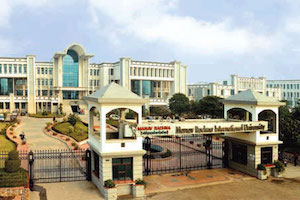Whether you are starting out in SAP, looking to upgrade your skills after a few years in the workforce, or seeking to specialise in a particular solution area, planning how to get there could save you valuable time and money.

There are more options than ever for engaging with SAP educational content – from formal education, to MOOCs for an overview of the very latest developments in technology, down to the SAP Community Network for answering individual task-level queries. Here are some of the methods available.
University courses
Universities offer both undergraduate and postgraduate courses in IT or more specific areas such as ERP or Business Intelligence which cover SAP. SAP also has its University Alliances Program, which helps students gain access to technologies and experts through networking and educational activities, social media, and partner networking.
Classroom training
If traditional, instructor-led classroom training is your preferred learning option, SAP Education offers classes at training centres, via partner delivery ecosystems, or on-site for customers. Courses are available across the full range of solution areas.
Online learning
More education content from SAP is now available via online learning – and comes via several different modes and methods, including:
eLearning via the SAP Learning Hub: SAP’s Learning Hub is a subscription-based cloud service. This model allows users to access courses at a time convenient to them. The Learning Hub is supported by Learning Rooms, which are SAP expert-led spaces covering particularly topics, allowing users to interact and have a social learning experience. The Learning Hub Discovery edition provides free access to around 120 introductory courses, but it provides personalisation and tracking of learning activities.
Virtual Live Classrooms: These offer the same benefits and curriculum of instructor-led classroom training. Students can interact with their instructor online, and also have access to SAP systems to undertake hands-on activities.
eAcademy: Provides access to bundles of classroom curriculum in a self-paced eLearning environment. eAcademy training also includes access to SAP training systems.
Massive Open Online Courses (MOOCs)
SAP has moved quickly to offer the ecosystem enterprise-grade learning about leading edge technologies for free via its openSAP platform. With MOOCs, learners simply register view content, and complete a weekly assignment before preparing for a final exam. Optional SAP system access is available, as is a record of achievement. Recent offerings include ‘Digital Transformation and Its Impact’, presented by SAP’s Sven Denecken and Bert Schulze, and ‘Rapid Deployment of SAP Solutions’.
Certification
Certification in a particular area is typically achieved by completing the requisite courses and sitting an exam, then maintaining the certification by completing delta enablement courses periodically. In the past, this has mostly required physical attendance at a Pearson Vue testing centre for exams, but SAP Education is introducing a new model for certification, specifically for the cloud-based solutions such as SuccessFactors, which will incorporate remote proctoring, enabling students to gain and maintain their certifications almost entirely online.
SAP Community Network (SCN)
At the more informal end of the education spectrum is the SAP Community Network, which provides user-created content around areas and issues in the SAP ecosystem. While some articles are more discursive in nature, others provide detailed technical explanations about how to complete certain tasks. The level of interaction with other users makes it perfect for drawing on the collective wisdom of the community to answer any tricky questions.
Training mapping for some common scenarios
The big question, of course, is how to combine these various modes of education to reach the level of professional skills, accreditation, and specialisation you are seeking.
The first place to start is SAP Training and Certification (training.sap.com). This not only has a full list of all courses across the various solution and industry areas within SAP, but it also provides detailed curriculum maps, outlining the classroom training, e-learning courses and certifications you will need to undertake to achieve competency in a particular area.
[See left for an example of a curriculum map – for SAP HANA Implementation and Modelling (SAP HANA SPS08).] Your first priorities for SAP education will depend on your starting point and your professional goals.Developing initial competency in SAP
Lejla Seperovic, head of business development, SAP APJ, says for someone who is employed in an organisation, already has some involvement with SAP, and wants to develop their capacity, the first step is to consider what knowledge they have – whether that is in finance or HR – and what their ultimate aim is.
Undertaking free courses, such as SAP’s MOOCs, or those in the Learning Hub Discovery edition – rather than having to ask for training budget – might be a good place to start.
“They are introductory courses which give you a flavour or an overview of a solution,” says Seperovic.
Once you have completed a ‘taster’, you might be ready for a more structured approach – which is where the Curriculum Maps come in.
“It’s a logical sequence of courses with a starting point and an end point. In a particular area, the curriculum map will actually have the end result of the SAP certification, and you can then work backwards, with preqrequisites, foundation, level one, and level two courses,” Seperovic says.
Upskilling or specialising in new areas
For an SAP professional who might be looking to specialise further or simply upgrade their skills, SAP Education recommends the SAP Learning Hub, built on the SuccessFactors platform. It’s part of a move away from one-shot training to consistent, ongoing learning, and as a subscription service providing access to more than 4000 courses in the platform.
“We went from being quite protective of IT and learning about two years ago, to opening everything we have to the customer and partner community,” Seperovic says. “This means that at any given point of time, wherever I am in my career, I can actually learn at the point of need. I can go into the platform and search for anything – from all the ERP solutions to the new front-end technologies, anything that’s out there is in the Learning Hub.”
Within the Learning Hub, more than 60 global solution-focused Learning Rooms provide a forum for interaction and guidance on the learning content.
“SAP is not always that easy, so this is where social learning comes in,” say Seperovic. “You have peers, and you have an instructor who is a global SAP subject matter expert, and this person actually poses a schedule with homework and milestones, and you can ask questions and participate in a discussion. So now we are giving people who have learnt this theoretical knowledge the opportunity to actually socialise with their peers, 24/7, on a more informal basis.”
At this solution level, students can also utilise Live Access – a preconfigured SAP system specifically related to the course they are undertaking, which provides a safe ‘sandbox’ to practice new skills.
Having certification recognised
Once SAP professionals are certified, making the most of this accreditation is important, particularly for consultants looking for new project opportunities. SAP has recently launched Credential Manager, which will be a freely accessible database for customers and partners to check the certification status of consultants or prospective employees they are looking at hiring.
“Customers who are more and more requesting certified people now actually have a pool to search for people, by solution and by geography,” Seperovic says.
She agrees that by making this information more accessible, Credential Manager has the potential to disrupt the SAP recruitment sector.
“We have more than 95 per cent of our global SAP consultants certified, but we needed something more formal. You have got peace of mind now, because it is easy for anybody to search the internet for these people.”
Planning your education for the year
So how much education should the average SAP professional be undertaking each year? It depends – if you are seeking to achieve a new SAP certification, in the traditional environment you should expect to devote around 20 days to learning, revision, and a certification exam.
Even for those who are already certified, if you want to stay up to speed in a certain area and be considered an ‘expert’, a daily or weekly commitment to education will be necessary – whether that is undertaking an eLearning course, completing a quiz, or reading some relevant articles.
“If you are planning the year ahead, look at what’s your priority, where your passion is, and where you want to move to and work backwards. Leverage what’s free out there – there’s probably more than you think. Put it in your calendar – people have the best of intentions and find a course, but they still don’t work through it. It takes a little bit of discipline to finish something,” Seperovic says.
“Also reach and out and leverage the mentors, and dare to ask questions. You can only really immerse yourself in the subject if you can be proactive and really take ownership of it.”
This article was first published in Inside SAP Summer 14/15.



